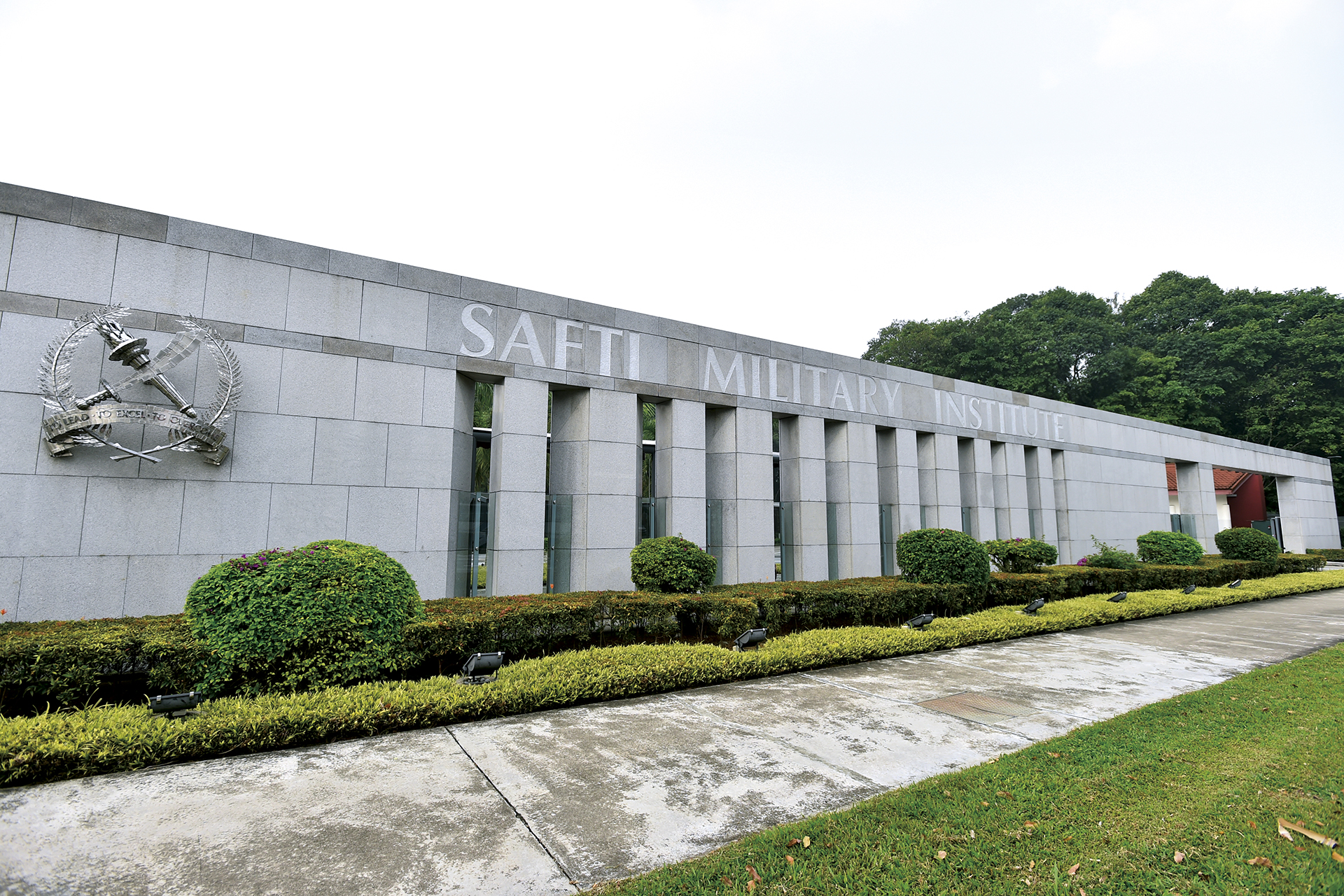10 THINGS YOU DIDN'T KNOW ABOUT SAFTI MI
// STORY Matthew Neo
// PHOTO Chai Sian Liang
Generations of soldiers have passed through its gates to experience some of the toughest training of their lives. Here are a few facts about SAFTI Military Institute (MI) that may be news to you.
1. SAFTI was an acronym for Singapore Armed Forces (SAF) Training Institute, but has now become a name in itself for the institute, reflecting SAFTI MI's heritage and close links with the old SAFTI.
2. On 18 Jun 1966, SAFTI was officially opened at Pasir Laba Camp by then-Defence Minister Dr Goh Keng Swee, who presented SAFTI's formation sign - the "Sword and Torch". It signifies the important role played by SAFTI in moulding and educating officers in the art of warfare.
3. Sixty officers and non-commissioned officers were handpicked to attend an Instructors' Preparatory Course to become the first batch of SAFTI instructors. The course began on 15 Feb 1966. And on 1 Jun 1966, the first batch of officer cadets (300 selected from 2,500 applicants) reported to SAFTI for training.
4. The ground breaking ceremony for SAFTI MI's present-day location at Upper Jurong Road was officiated by the late Mr Lee Kuan Yew, then-Prime Minister, on 9 Jun 1990. He said: "The spirit and traditions of military schools are represented by the buildings (soldiers have) lived and trained in. In time, the new buildings comprising SAFTI will arouse in our young officer cadets pride in past achievement and present endeavour and inspire them to supreme effort on behalf of our society."
5. On 25 Aug 1995, SAFTI MI's official opening ceremony was officiated by then-Prime Minister Goh Chok Tong. He presented new Colours to SAFTI MI, replacing the old SAFTI Colours which Mr Lee Kuan Yew presented to the institute in 1968.
6. SAFTI MI was originally intended to be an "open camp", like the United States Military and Naval Academy. Before the 9/11 terrorist attacks, civilians did not need passes or undergo security checks to enter the camp. The only restricted areas were the camp offices and living quarters. Since then, there are armed sentries at entrances, and security checks are mandatory for all.
7. When SAFTI MI was still an open camp, visitors could go to the two-storey SAFTI MI library to return National Library Board books.
8. One of SAFTI MI's prominent landmarks is its tower. This 60m-high structure is three-sided, symbolising the Tri-Service nature of the SAF. It also has a 265-step stairway representing the number of days a cadet took before commissioning as an officer then.
9. At the centre of the SAFTI Ceremonial Hall is a small area tiled with granite sourced from Bukit Timah Hill, while the rest of the floor is tiled with polished Italian black granite. When new Officer Cadets pledge to take up the challenge of Officer Cadet training, they stand on this "soil of Singapore" to further remind them of their purpose and mission in defending the nation.
10. Another notable feature in the institute is SAFTI Link Bridge, which provides easy access to training grounds. It symbolises the historic link between the old and the new SAFTIs, as well as the link between the Specialist Cadet School and the Officer Cadet School.










